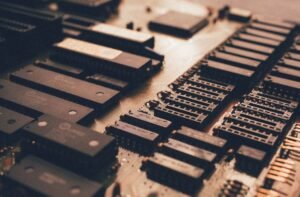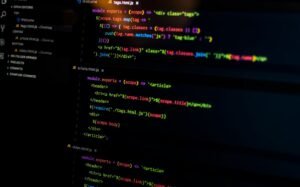How Can AI Be Biased?
Artificial Intelligence (AI) has become increasingly integrated into various aspects of our lives, from voice assistants like Siri and Alexa to recommendation algorithms on social media platforms. While AI promises to make our lives easier and more efficient, there is growing concern about the potential biases embedded within these systems. It is crucial to understand how AI can be biased and what impact it can have on society.
Key Takeaways:
- AI can be biased due to biased data, biased algorithms, or biased interpretations of results.
- Biased AI systems can perpetuate societal inequality and discrimination.
- Evaluating and mitigating AI bias requires transparency, diverse development teams, and robust testing.
One of the primary sources of bias in AI is biased data. Machine learning algorithms learn from data, and if the training data is biased, the AI system will make biased predictions or decisions. For example, if an AI system is trained on historical hiring data that favors certain demographics, it may perpetuate those biases by prioritizing candidates from those demographics in future hiring processes. **It is crucial to ensure that the training data used for AI is representative and diverse**.
Biases can also arise from the algorithms themselves. Machine learning models are designed to find patterns in data, and if the algorithms are not carefully designed, they can inadvertently amplify existing biases. *For instance, a facial recognition algorithm trained predominantly on one ethnicity could have higher error rates for other ethnicities*. This can lead to unfair consequences, such as higher false positive rates for certain groups during surveillance or criminal identification.
Types of AI Bias:
- 1. Prejudice Bias: AI systems can learn biases present in the data they are trained on.
- 2. Stereotype Bias: AI can reinforce stereotypes by applying biased assumptions to certain groups.
- 3. Omission Bias: AI can ignore or exclude certain groups or individuals based on limited or biased data.
| AI Application | Biased Impact |
|---|---|
| Hiring Algorithms | Reinforce gender or racial biases in candidate selection. |
| Image Recognition Systems | Higher error rates for certain ethnicities or gender. |
Interpretation of AI results can also introduce biases. *For instance, if an AI system is used to analyze loan applications, but the interpretation of its predictions is biased against certain demographics, it can perpetuate discriminatory lending practices*. It is vital to analyze and interpret AI results with caution, considering potential biases that may be present.
| Implication | Effect |
|---|---|
| Unfair Treatment | Discrimination against certain individuals or groups. |
| Reinforcement of Inequality | Perpetuating existing societal biases and disparities. |
Addressing AI bias requires a multi-faceted approach. Transparency is essential in ensuring that the development and deployment of AI systems are accountable and subject to scrutiny. **Diverse development teams** can help mitigate bias by bringing different perspectives and experiences to the table. *Additionally, robust testing and evaluation throughout the development process can help uncover and address bias*. Continual monitoring and updating of AI systems are necessary to ensure fairness and mitigate the potential harm caused by biased AI.
As AI continues to advance and permeate various sectors, addressing bias becomes even more critical. By acknowledging the potential for bias in AI systems and taking proactive steps to minimize it, we can ensure that AI contributes positively to society and avoids perpetuating societal inequalities.

Common Misconceptions
1. AI is objective and unbiased by default
One common misconception about AI is that it is completely objective and unbiased by default. However, AI systems are created and developed by humans, who may inadvertently encode their own biases into the algorithms. This means that AI can inherit and perpetuate the same biases that humans have.
- AI algorithms rely on human-generated data
- Humans developing AI may have unconscious biases
- AI learns from patterns and biases in the data it is trained on
2. AI operates in a fair and equal manner for everyone
Another misconception is that AI operates in a fair and equal manner for everyone. However, AI systems can inadvertently discriminate against certain groups or individuals due to biases in the data it is trained on or the algorithms used. This can result in unfair and unequal treatment in areas such as hiring, loan approvals, or criminal justice.
- AI can perpetuate existing societal biases
- Data might not be representative of all groups or populations
- Algorithmic bias can lead to discriminatory outcomes
3. AI bias is always intentional
Many people assume that AI bias is always intentional, but this is not the case. Bias in AI can occur unintentionally due to the complexity of developing algorithms and the potential for inherent biases in the data. Even well-intentioned developers can overlook or be unaware of the biases present in AI systems they create.
- Developers may not be aware of the biases in the data
- Unintentional bias can emerge from complex algorithms
- Systemic biases can be ingrained in data sources
4. AI systems are completely autonomous and lack human influence
Contrary to popular belief, AI systems are not completely autonomous and devoid of human influence. Humans play a significant role in developing, training, and configuring AI algorithms. Additionally, AI systems can learn from human-generated data, which inevitably contains human biases.
- Humans create AI algorithms
- Human involvement in the data collection and training process
- Human interpretation of AI-generated results
5. AI bias only affects marginalized or minority groups
It is a misconception that AI bias only affects marginalized or minority groups. Bias in AI can have wide-ranging impacts and affect individuals from all walks of life. Everyone, regardless of their background, can potentially be subjected to biased decisions and outcomes resulting from flawed AI systems.
- All individuals can be negatively impacted by biased AI
- Inaccurate assessments can harm individuals across the board
- Data bias can affect AI predictions for any group

How Can AI Be Biased?
Artificial Intelligence (AI) has become an integral part of our daily lives, assisting us in various tasks and decision-making processes. However, as advanced as AI technology may be, it is not immune to bias. Bias in AI can arise from the data it is trained on, the algorithms employed, and even the developers themselves. This article discusses ten intriguing examples of AI bias and highlights the importance of fair and responsible AI development.
AI Bias in Hiring Practices
AI systems are increasingly being used to automate the hiring process, but they can inadvertently perpetuate biases based on gender or ethnicity. For instance, a study found that an AI recruiting tool favored male candidates over females due to biased historical hiring data.
AI Racial Bias in Facial Recognition
Facial recognition systems have shown racial bias, with higher error rates for people with darker skin tones. In some instances, individuals were falsely classified or were more likely to be misidentified based on their race.
Age Bias in AI Lending Decisions
Lending algorithms may discriminate against older individuals, considering their age as a risk factor regardless of their financial stability. Such biases can unjustly deny loans or impose higher interest rates on qualified borrowers of older age groups.
Gender Stereotyping in Voice Assistants
Many voice assistants exhibit gendered characteristics, typically as female, reinforcing societal stereotypes. This undermines diversity and can lead to reinforcing biases and unequal power dynamics between genders.
AI Bias in Predictive Policing
Predictive policing systems, using historical crime data, can disproportionately target and overpolice communities of color. This perpetuates a biased cycle and further exacerbates existing inequalities in the justice system.
Religious Bias in AI Chatbots
Chatbots powered by AI can often lack knowledge or understanding of certain religions, leading to incorrect, disrespectful, or biased responses when engaging with users seeking religious guidance or information.
Ethnic Bias in Healthcare Algorithms
AI algorithms used in healthcare decision-making have demonstrated ethnic bias, resulting in unequal treatment recommendations based on race or ethnicity. This can impact diagnosis accuracy and quality of care for individuals from marginalized groups.
Socioeconomic Bias in Loan Approval
AI algorithms assess loan applications based on various factors, but they can inadvertently perpetuate socioeconomic biases. This can lead to unequal access to loans and further widen the wealth gap between different socio-economic classes.
Political Bias in Content Moderation
Content moderation algorithms utilized in social media platforms may exhibit political biases, censoring or promoting certain political stances based on the creators’ or developers’ own beliefs. This compromises the platforms’ impartiality and freedom of expression.
Disability Bias in AI Disability Assessments
AI tools used in disability assessments might fail to account for the extensive range of disabilities, potentially disregarding or minimizing the impact of certain impairments. This oversight can lead to individuals being unfairly denied necessary accommodations.
Conclusion
As AI continues to permeate various aspects of society, it is crucial to recognize and address the biases that may arise. Developers, policymakers, and society as a whole must prioritize fairness, transparency, and ethical considerations in AI development efforts. By acknowledging and actively working to mitigate bias, we can ensure that AI becomes a tool that promotes inclusivity and equality rather than reinforcing societal biases.
Frequently Asked Questions
How Can AI Be Biased?
What causes AI systems to become biased?
What is biased training data and how does it impact AI?
Can algorithmic biases contribute to AI bias?
How do human biases influence AI systems?
How can AI be biased against certain groups of people?
What are the potential consequences of AI bias?
How can bias in AI systems be mitigated?
Are there legal implications for AI bias?
What role does transparency play in mitigating AI bias?
How can bias detection and fairness evaluation tools contribute to addressing AI bias?




